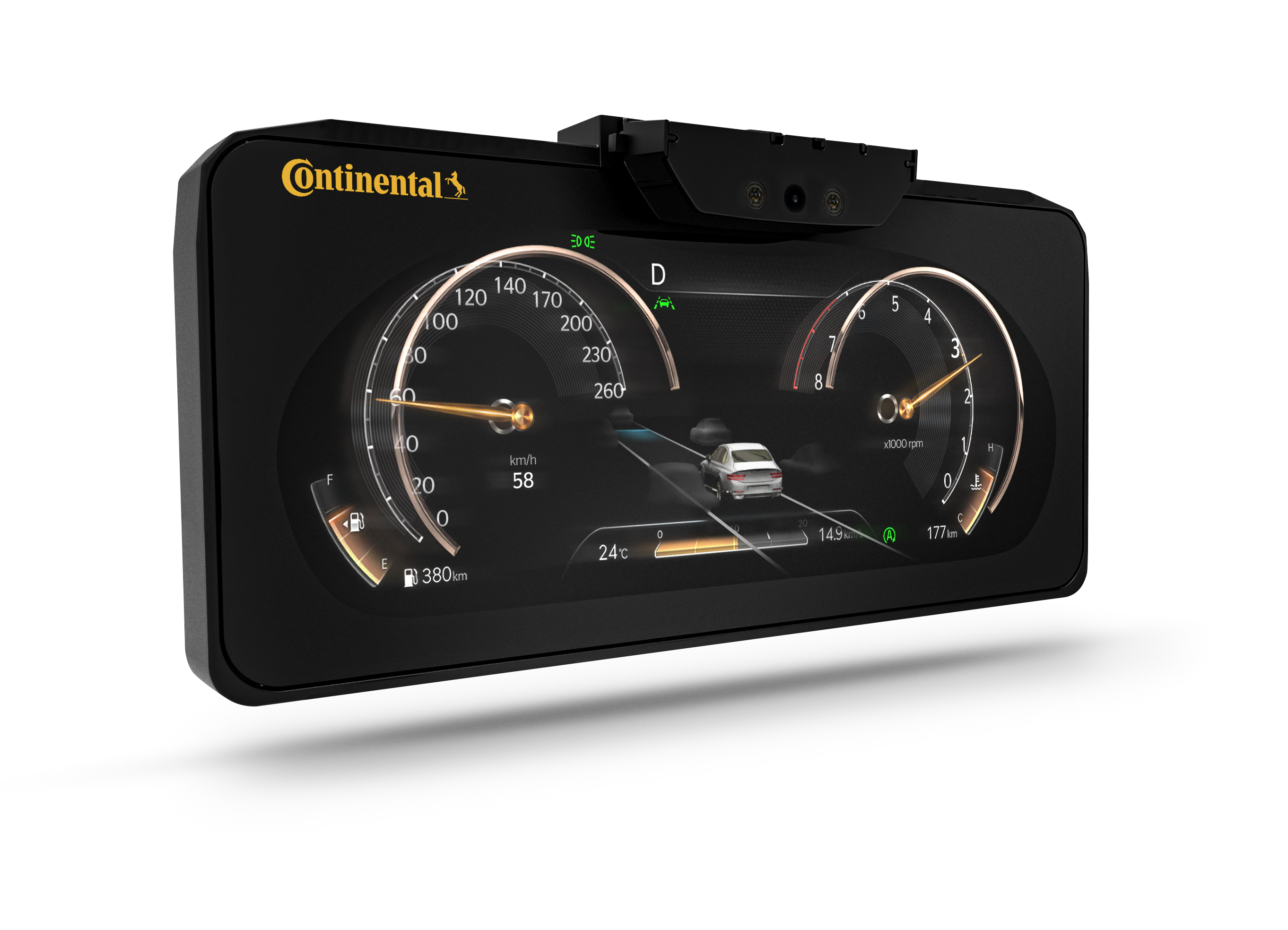This post is also available in: German
- Production launch of 3D display without special glasses for HMC Genesis GV80
- 3D technology relies on Continental interior camera to detect driver’s line of sight
- High Performance Computer: Cross Domain Hub removes boundaries among different screens in the vehicle
- Next generation of 3D displays already in development
Babenhausen, Germany, March 16, 2020. Technology company Continental is launching its volume-production display featuring autostereoscopic 3D technology on the market in the HMC Genesis GV80 high-line variant. On the screen, the technology displays three-dimensional scales, pointers and objects, for example displaying a stop sign warning in the driver’s line of sight. No special glasses are required to see the three-dimensional warning signal. Instead, Continental uses parallax barriers – slanted slats that divide the image for the viewer – as if looking at real objects, two different, slightly offset views reach the right and left eye, resulting in the three-dimensional image.
Continental’s interior camera, which detects the driver’s line of sight and adjusts the 3D views to their precise head position, plays an essential role. To prevent drivers from focusing their attention on the 3D screen for too long, the camera also employs attention detection to identify potential moments of driver distraction or fatigue. With the 3D visualization of the instrument cluster, Continental is focused on ensuring the driver is not overloaded with information provided by advanced driver assistance systems, conventional displays, communication services and infotainment applications.

“With our volume-production display featuring autostereoscopic 3D technology, we are raising human-machine interaction to a whole new level and laying the foundations for intuitive communication in the connected cockpit of tomorrow,” said Dr. Frank Rabe, head of the Human Machine Interface business unit at Continental. “To ensure that this gain in safety and comfort does not come at the expense of a lean electronics architecture, we integrated various displays in the center console or dashboard into our Cross Domain Hub.”
Cross Domain Hub Removes Boundaries Between Individual Screens and Control Units
In the future, to reduce complexity and save weight and space, only a small number of control units will be required for all the in-vehicle input and output devices. The Cross Domain Hub is a high performance computer and the basis for Continental’s 3D display being used in the HMC Genesis. It marks a further milestone in the transformation of modern E/E architecture. The intention is to move away from numerous individual control units to a few high performance computers. In the next generation of Continental’s cross-domain solution, all displays are integrated into a single unit. The driver will be able to distribute content across multiple displays, for example by means of gesture control, dragging navigation maps from the front passenger’s display onto their own screen and arranging exactly where they want to place them. In automated driving mode, the displays merge across the entire width of the cockpit and offer all the services and apps that are otherwise only available on the front passenger’s side.
Lightfield Display: In-car 3D Movies for Everyone
To ensure that the front passenger and occupants in the rear seats can also enjoy the three-dimensional experience, Continental is currently developing a new 3D display based on the natural 3D Lightfield Technology from Silicon Valley based Leia Inc.. With this technology there is neither the need for cameras detecting head movement nor 3D glasses. As a result, the Natural 3D Display not only saves weight, space and costs, but also opens up an entire world of digital services to all the passengers in a connected car – from video conferences and online shopping to augmented reality games and 3D movies. Instead of the parallax barriers described above, this system relies on Diffractive Lightfield Backlighting (DLB™) technology from Leia. An optical waveguide with diffraction grating and nanostructures beneath the display panel creating a natural 3D effect by bending the light. Continental is adapting this technology for use in vehicles. The system is planned for production by 2022.
Contact for journalists
Sebastian Fillenberg
External Communication
Vehicle Networking and Information
Continental
Phone: +49 6196 87 3709
E-mail: sebastian.fillenberg@continental.com



